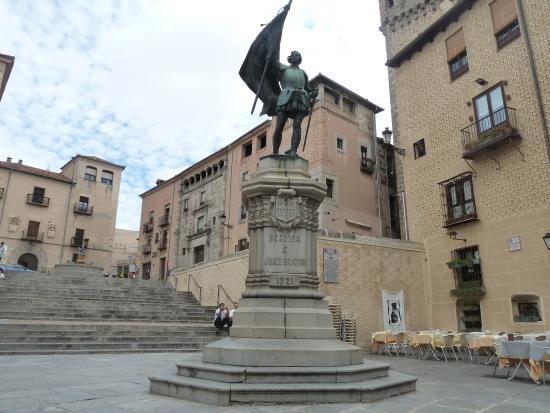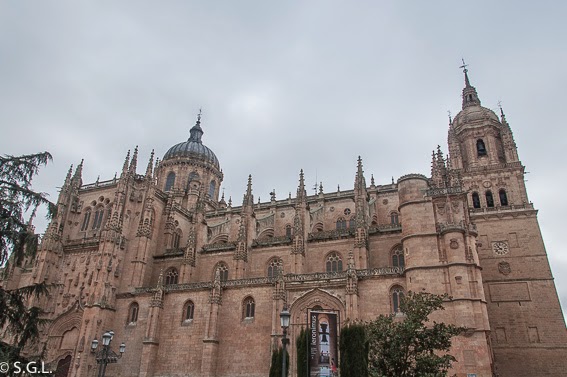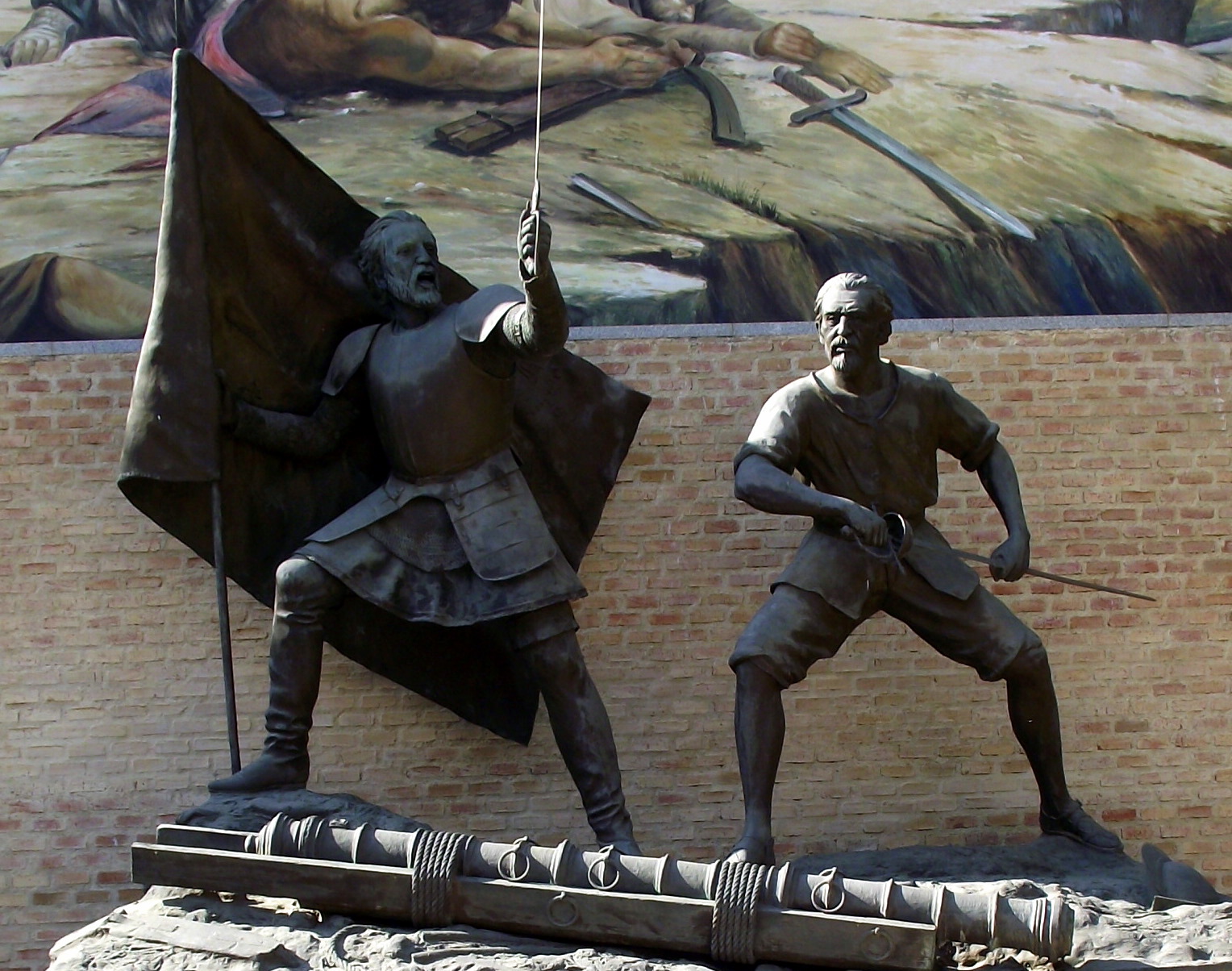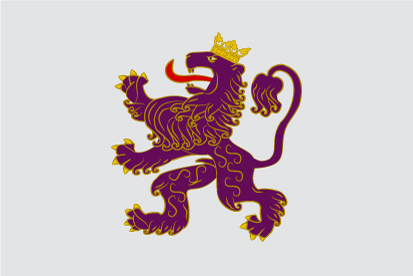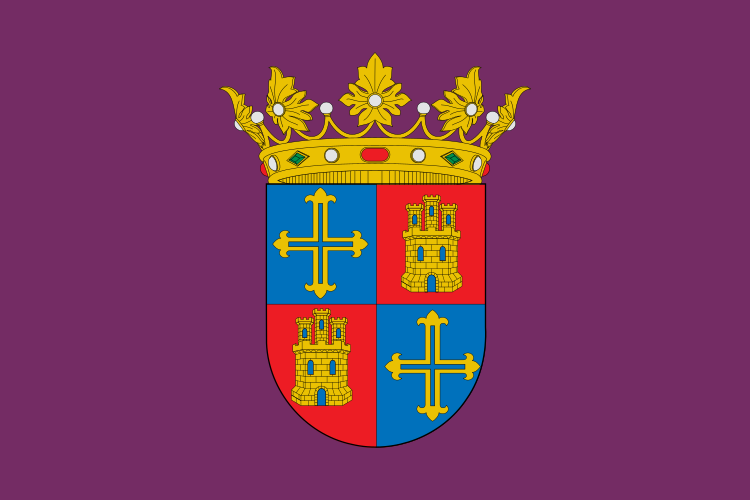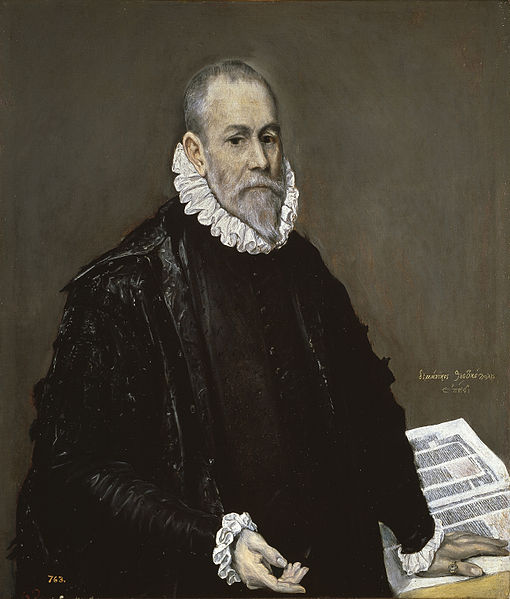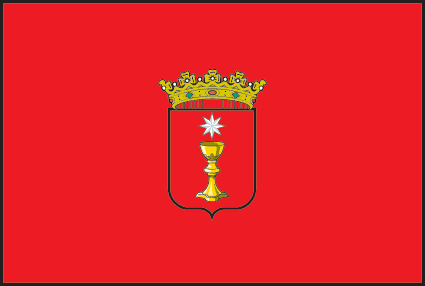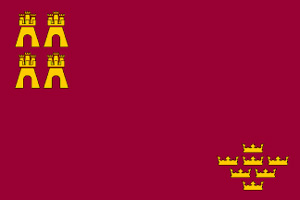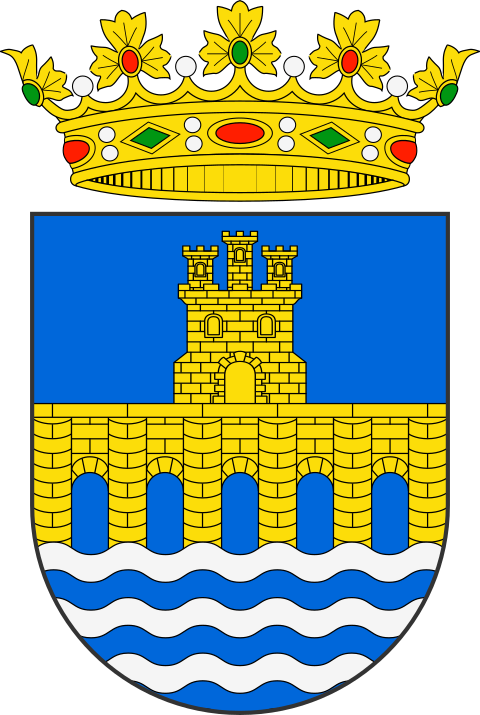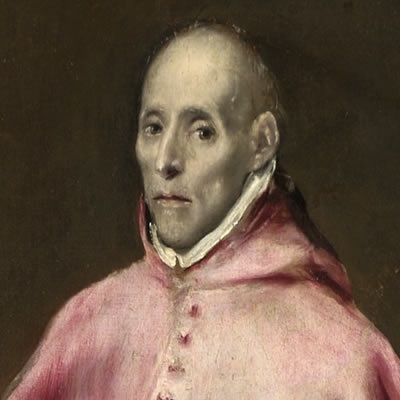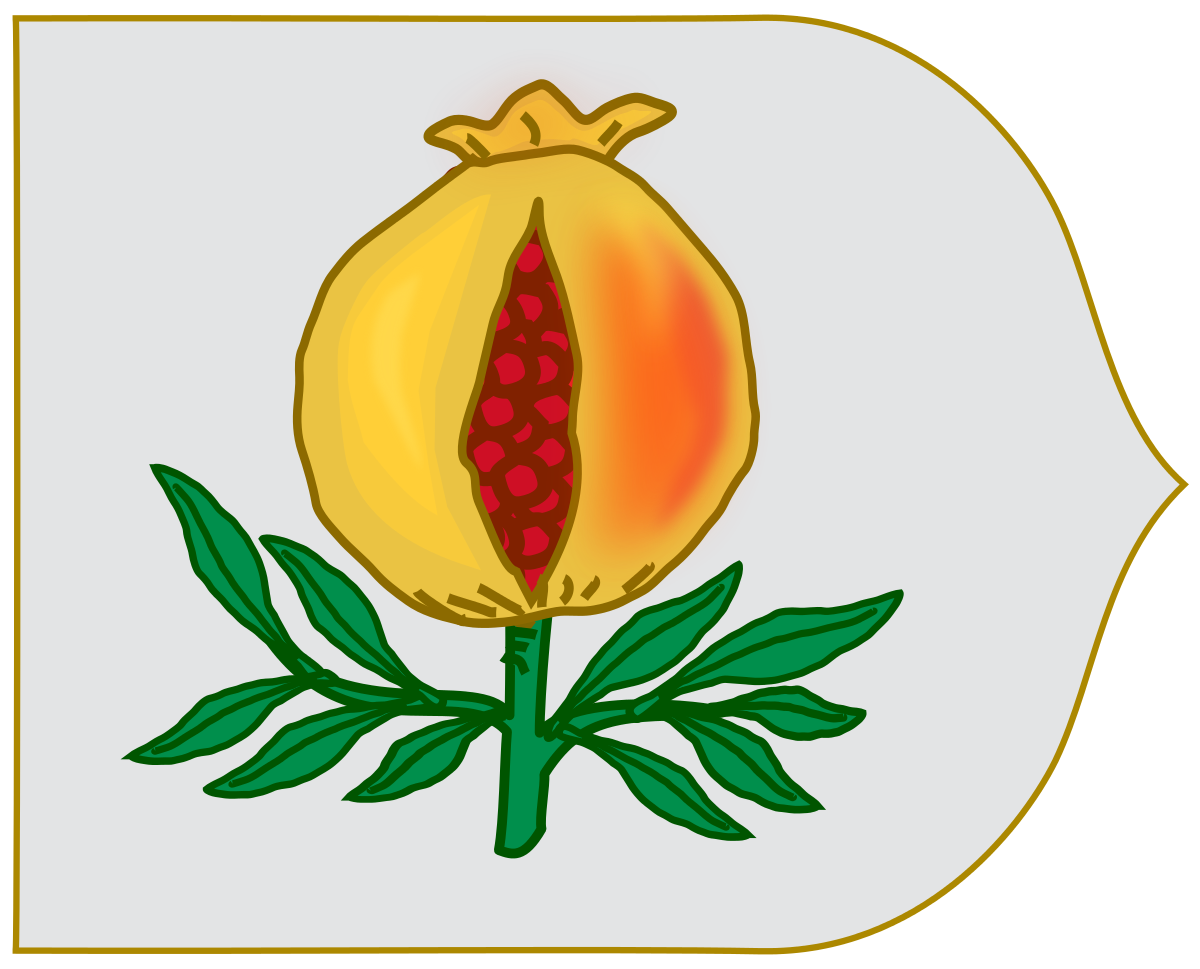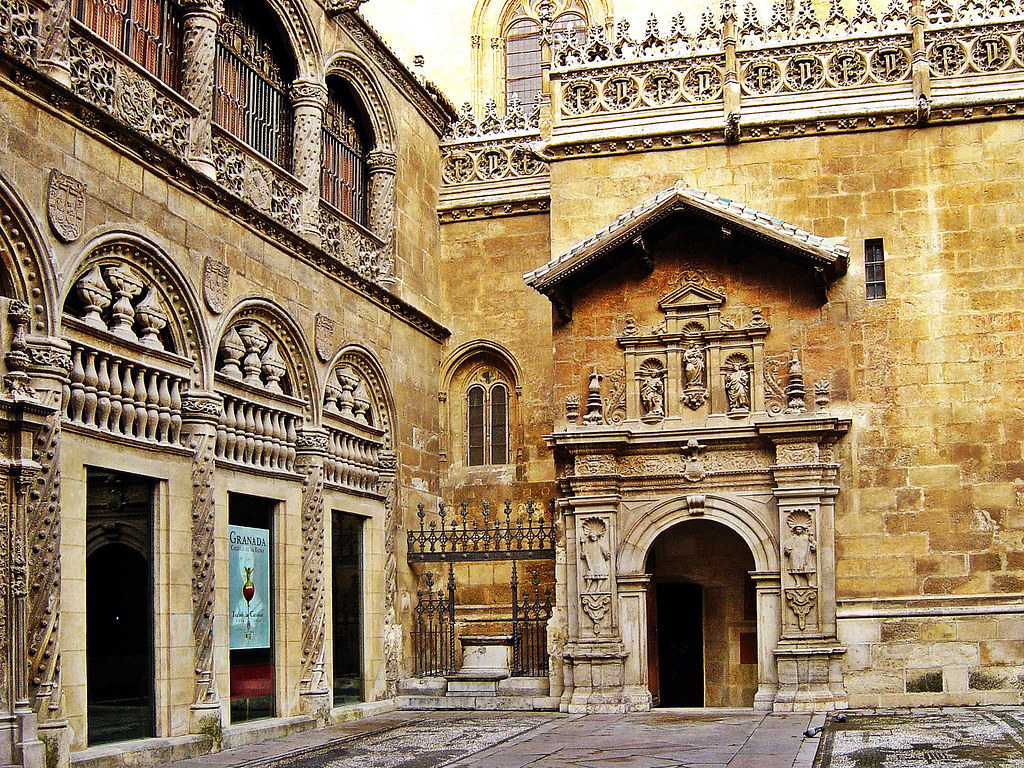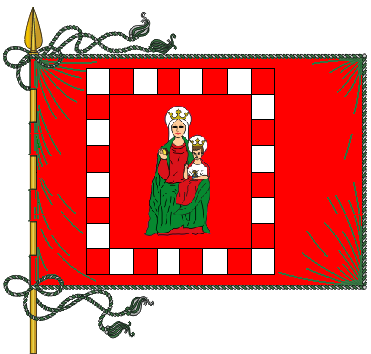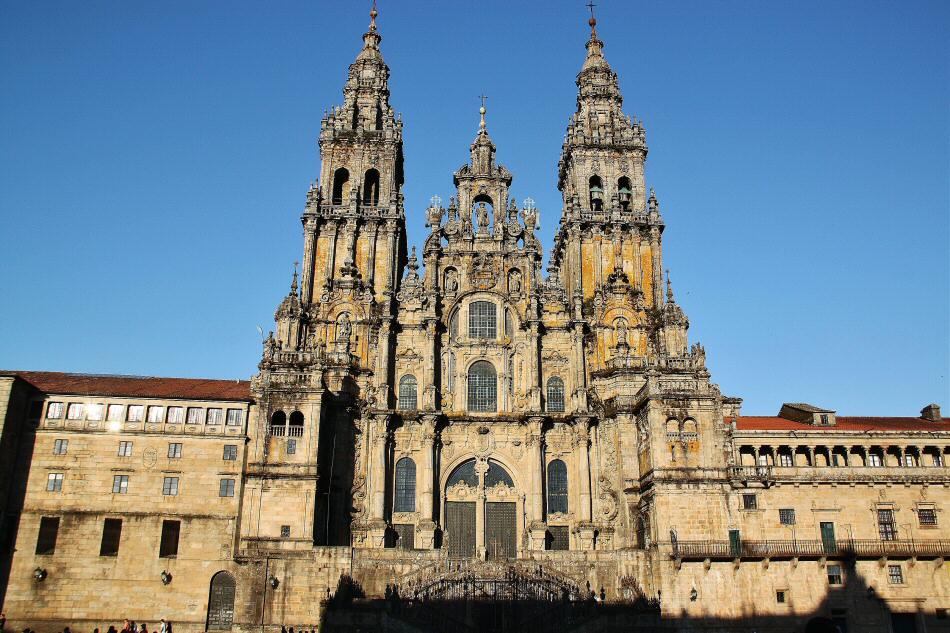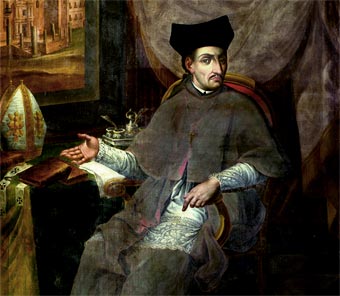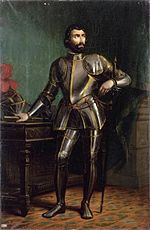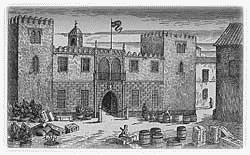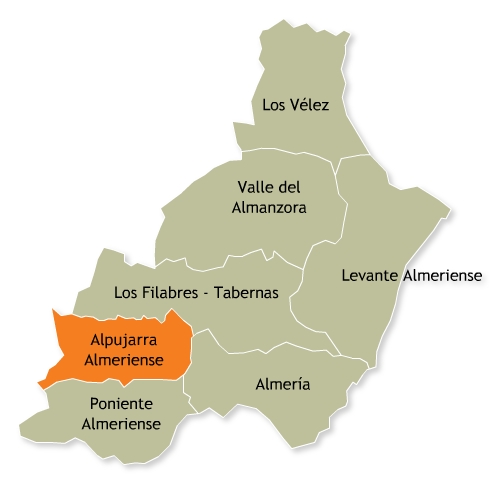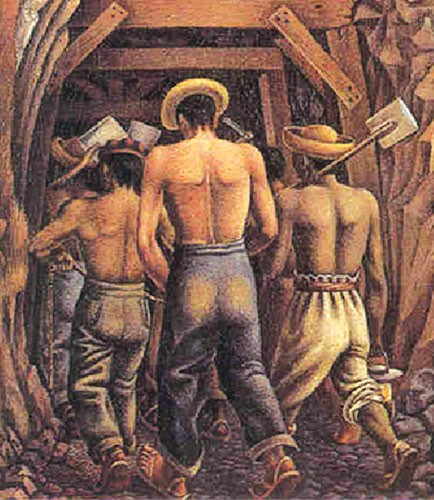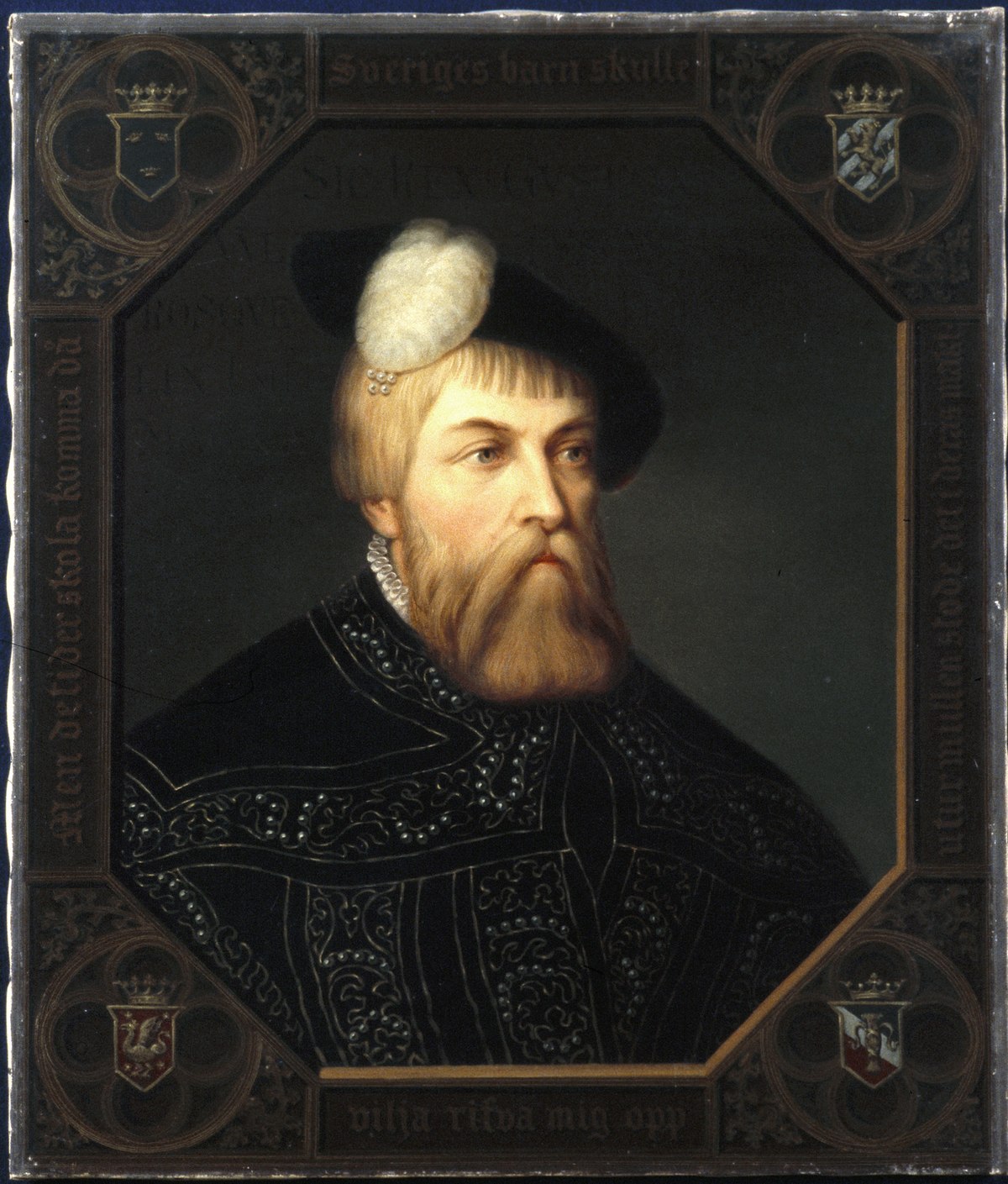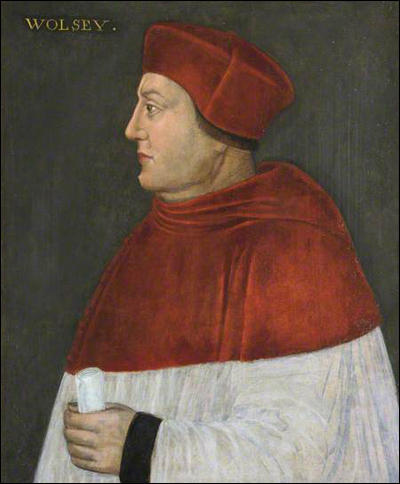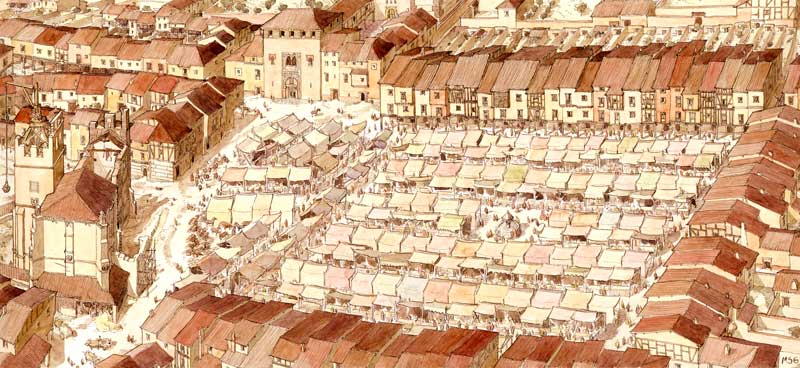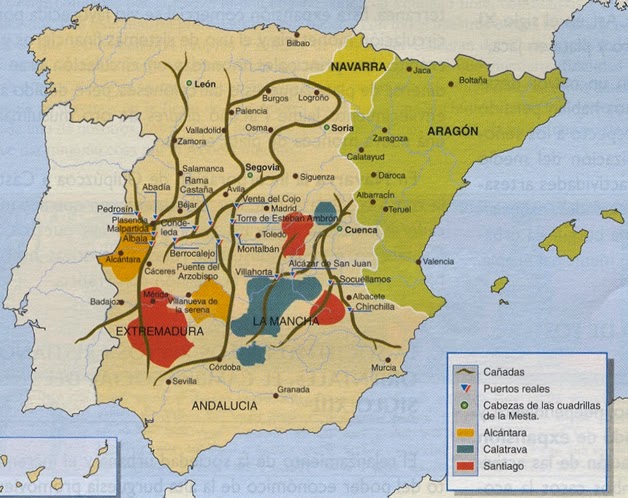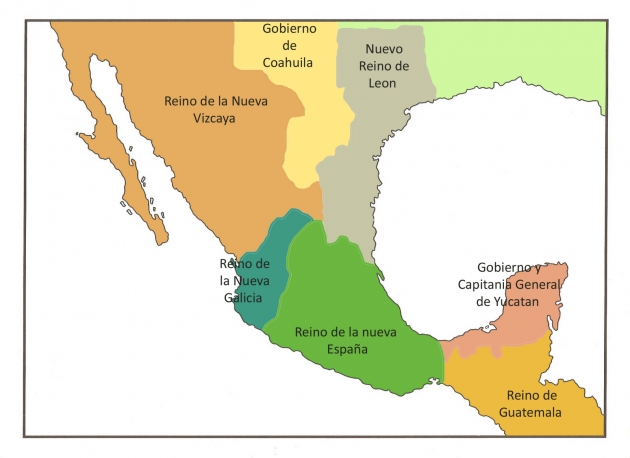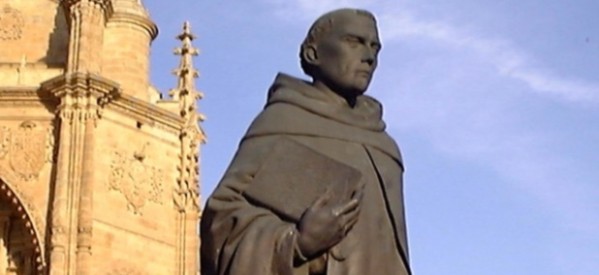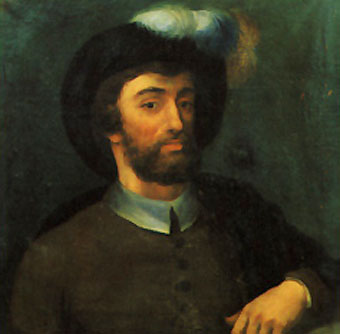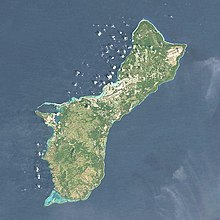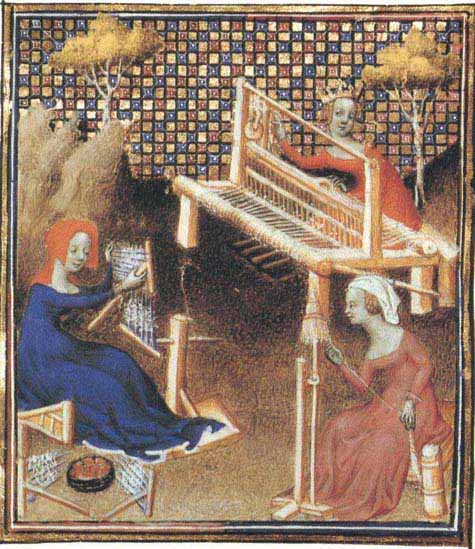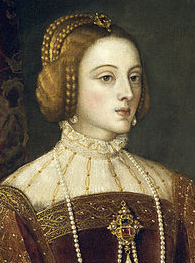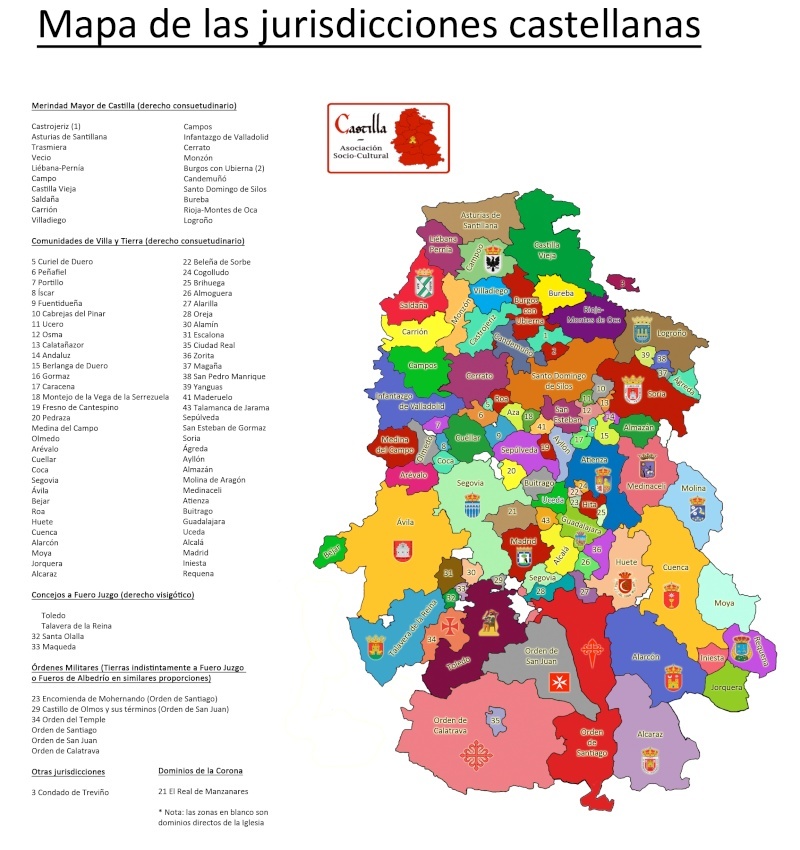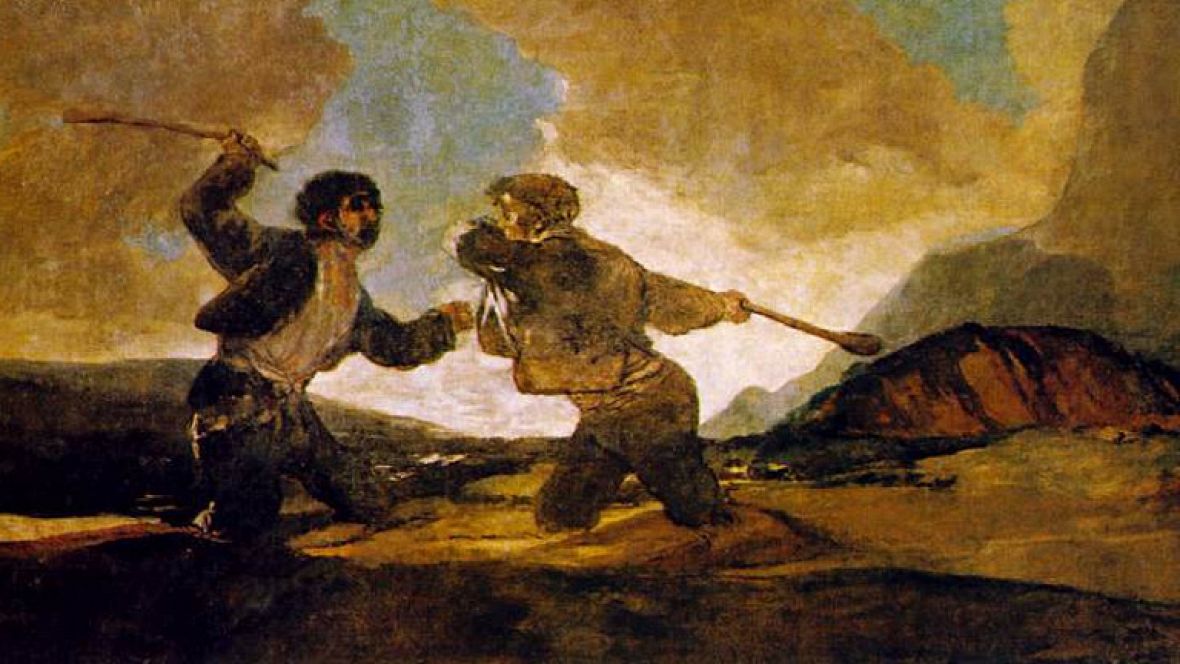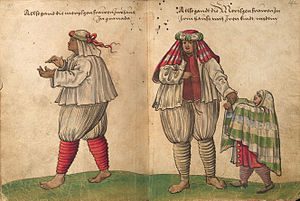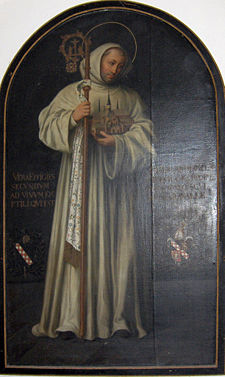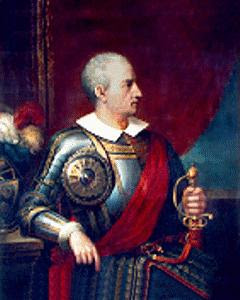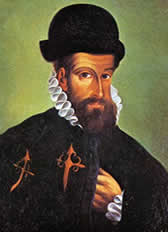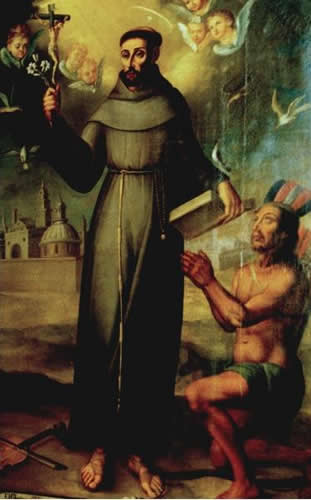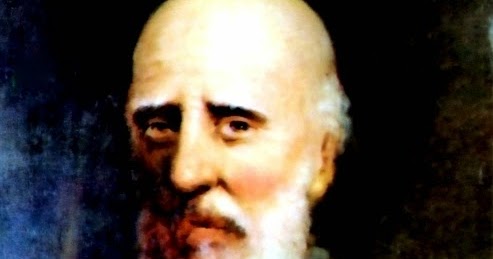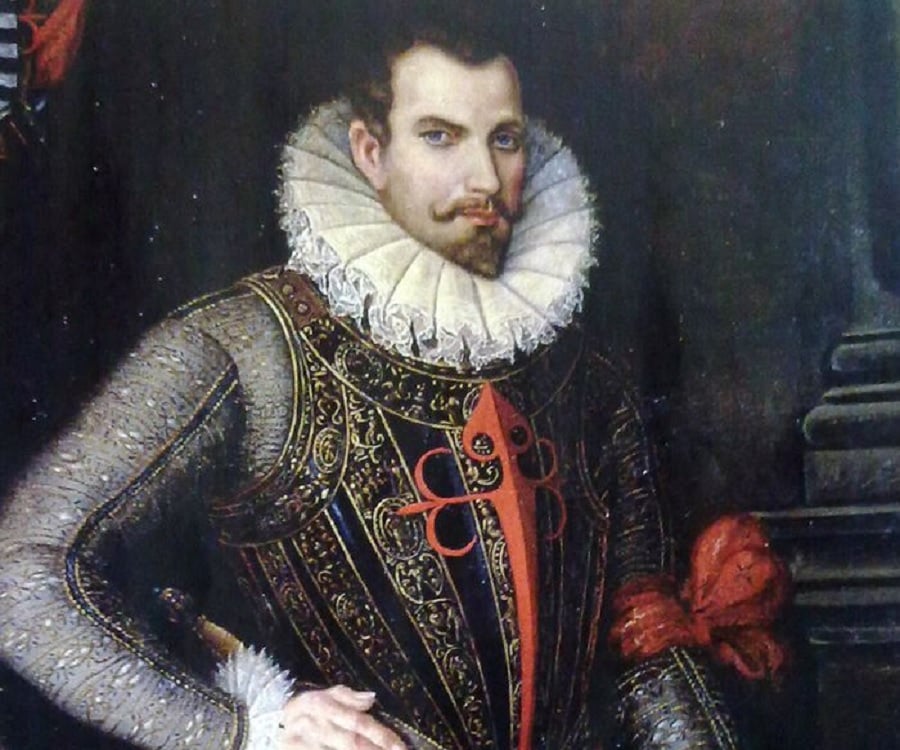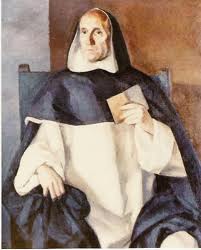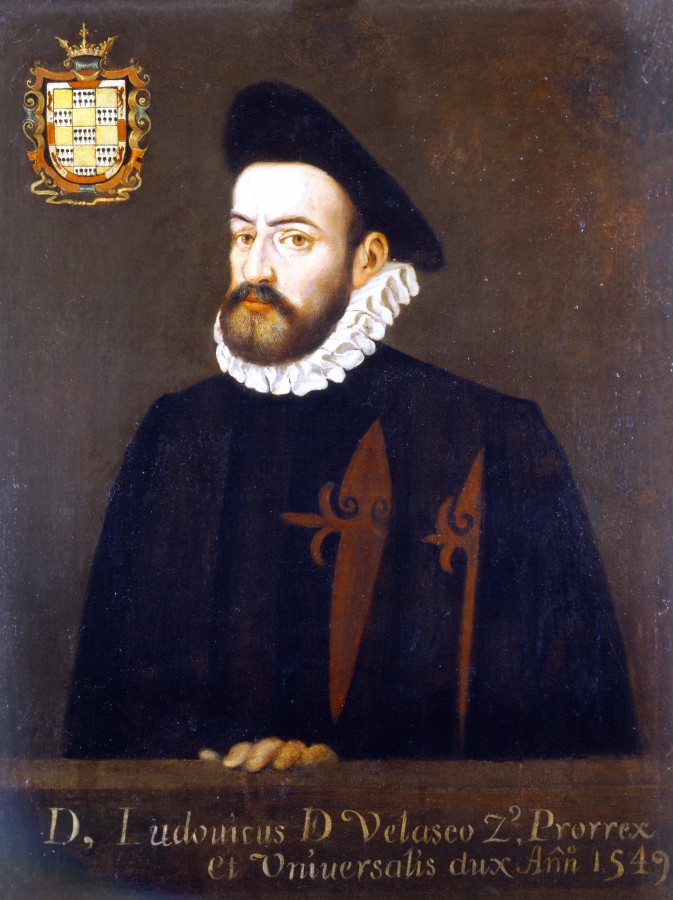1.Introduction: The revolt,the war and the junta
Discontent had been brewing for years before the Revolt of the Comuneros. The second half of the 15th century saw profound political, economic, and social changes in Spain. Economic growth created new urban industries and offered a route to power and wealth not tied to the aristocracy. Support from these urban elites was critical to Ferdinand and Isabella's centralization of power, and they acted as a counterweight to the landed aristocracy and the clergy.
However, with Queen Isabella I's death in 1504, this alliance between the national government and the budding middle class faltered. The Castilian government decayed with each successive administration, becoming rife with corruption. King Philip I ruled for a mere two years; he was replaced by Archbishop Cisneros as regent for a short time, and then by Isabella's widower Ferdinand who ruled from Aragon. Ferdinand's claim to continue ruling Castile as regent was somewhat tenuous after Isabella's death, but no plausible alternatives existed as the sovereign, their widowed daughter Joanna, was mentally unfit to reign on her own. The landed nobility of Castile took advantage of the weak and corrupt Royal Council to illegally expand their territory and domain with private armies while the government did nothing. In response, the towns signed mutual defense pacts, relying on each other rather than the national government.
In 1516, Ferdinand died. The remaining heir was Ferdinand and Isabella's grandson Charles, who became King Charles I of both Castile and Aragon in co-regency with his mother Joanna. Charles was brought up in Flanders, the homeland of his father Philip, and barely knew Castilian. The people greeted him with skepticism, but also hoped he would restore stability. With the arrival of the new king in late 1517, his Flemish court took positions of power in Castile; young Charles only trusted people he knew from the Netherlands. Among the most scandalous of these was the appointment of the twenty-year-old William de Croÿ as Archbishop of Toledo. The Archbishopric was an important position; it had been held by Archbishop Cisneros, the former regent of the country. Six months into his rule, discontent openly simmered among rich and poor alike. Even some monks began to agitate, denouncing the opulence of the royal court, the Flemish, and the nobility in their sermons. One of the first public protests involved placards posted in churches, which read:
"You, land of Castile, very wretched and damned are you to suffer that as noble a kingdom as you are, you will be governed by those who have no love for you"
In April 1520, Toledo was already unstable. The city council had been at the forefront of protests against Charles' bid to become Holy Roman Emperor. They decried the short-term expenses that would be borne by Castile and questioned the role of Castile in this new political framework, given the possibility that the land would become a mere imperial province. The situation erupted when the royal government summoned the most radical of the city councilors away from the city, intending to send back more easily controllable replacements on a royal salary. The order came on April 15; one day later, as the councilors prepared to leave, a large crowd opposed to the departure rioted and drove out the royal administrators instead.A citizen's committee was elected under the leadership of Juan López de Padilla and Pedro Laso de la Vega, naming themselves a Comunidad. On April 21, the remaining administrators were driven from the fortifications of the Alcázar of Toledo.
Following Charles' departure to Germany, the riots multiplied in the cities of central Castile, especially after the arrival of legislators who had voted "yes" to the taxes Charles had asked for. Segovia had some of the earliest and most violent incidents; on May 30, a mob of woolworkers murdered two administrators and the city's legislator who had voted in favor. Incidents of a similar size occurred in cities such as Burgos and Guadalajara, while others, such as León, Ávila, and Zamora, suffered minor altercations.
The Junta of Ávila
Other cities now followed the lead of Toledo and Segovia, deposing their governments. A revolutionary Cortes, La Santa Junta de las Comunidades ("Holy Assembly of the Communities"), held its first session in Ávila and declared itself the legitimate government deposing the Royal Council. Padilla was named Captain-General, and troops were assembled. Still, only four cities sent representatives at first: Toledo, Segovia, Salamanca, and Toro.
Faced with the situation in Segovia, Regent and Cardinal Adrian of Utrecht decided to use the royal artillery, located in nearby Medina del Campo, to take Segovia and defeat Padilla. Adrian ordered his commander Antonio de Fonseca to seize the artillery. Fonseca arrived on August 21 in Medina, but encountered heavy resistance from the townspeople, as the city had strong trade links to Segovia. Fonseca ordered the setting of a fire to distract the resistance, but it grew out of control. Much of the town was destroyed, including a Franciscan monastery and a trade warehouse containing goods valued at more than 400,000 ducats. Fonseca had to withdraw his troops, and the event was a public relations disaster for the government.Uprisings throughout Castile occurred, even in cities that previously had been neutral such as Castile's capital, Valladolid. The establishment of the Comunidad of Valladolid caused the most important core of the Iberian plateau to declare for the rebels, upending the stability of the government. New members now joined the Junta of Ávila and the Royal Council looked discredited; Adrian had to flee to Medina de Rioseco as Valladolid fell. The royal army, with many of its soldiers unpaid for months, started to disintegrate.
The Junta of Tordesillas
The comunero army now properly organized itself, integrating the militias of Toledo, Madrid, and Segovia. Once told of Fonseca's attack, the comunero forces went to Medina del Campo and took possession of the artillery that had just been denied to Fonseca's troops. On August 29, the comuneros' army arrived at Tordesillas with the goal of declaring Queen Joanna the sole sovereign. The Junta moved from Ávila to Tordesillas at the Queen's request and invited cities that had not yet sent representatives to do so. A total of thirteen cities were represented in the Junta of Tordesillas: Burgos, Soria, Segovia, Ávila, Valladolid, León, Salamanca, Zamora, Toro, Toledo, Cuenca, Guadalajara, Seville, Granada, Cordova, Jaén and Madrid. . Since most of the kingdom was represented at Tordesillas, the Junta renamed itself the Cortes y Junta General del Reino ("General Assembly of the Kingdom"). On September 24, 1520, the mad Queen, for the only time, presided over the Cortes.
The legislators met with Queen Joanna and explained the purpose of the Cortes: to proclaim her sovereignty and restore lost stability to the kingdom. The next day, September 25, the Cortes issued a declaration pledging to use arms if necessary and for the whole to aid any one city that was threatened. On September 26, the Cortes of Tordesillas declared itself the new legitimate government and denounced the Royal Council. Oaths of self-defense were taken by all the cities represented over the week, finishing by September 30. The revolutionary government now had structure and a free hand to act, with the Royal Council still ineffective and confused.
The growing success of the comuneros emboldened people to accuse members of the old government of complicity with royal abuses. The protests attacked the landed nobility as well, many of whom had illegally taken property during the reign of the regents and weak kings after Isabella's death. In Dueñas, the Count of Buendía's vassals revolted against him on September 1, 1520, encouraged by rebel monks. This uprising was followed by others of a similar anti-feudal nature.The leadership of the comuneros was forced to take a stance on these new rebellions; reluctant to openly endorse them, the Junta initially denounced them but did nothing to oppose them. The dynamics of the uprising thus changed profoundly, as it could now jeopardize the status of the entire manorial system. The nobles had previously been somewhat sympathetic to the cause due to their loss of privileges to the central government. However, these new developments lead to a dramatic drop in support for the comuneros from aristocrats, who were frightened by the more radical elements of the revolution.
The comuneros' attempt to use Queen Joanna for legitimacy did not bear fruit so the Junta decided to proclaim the republic in 1520 with all the represented cities voting for it.
Acuña soon had to confront Antonio de Zúñiga, who had been appointed commander of the royalist army in the Toledo area. Zúñiga was a prior in the Knights of St. John, who maintained a base in Castile at the time. Acuña received information that Zúñiga was in the area of Corral de Almaguer, and pursued battle with him near Tembleque. Acuña drove the royalist forces off, and then launched a counterattack of his own between Lillo and El Romeral, inflicting a crushing defeat on Zuñiga.
Undaunted, Acuña continued into Toledo. He appeared at the Zocodover Plaza in the heart of the city on March 29, 1521, Good Friday. The crowd gathered around him and took him directly to the cathedral, claiming the archbishop's chair for him. The next day he met with María Pacheco, wife of Juan de Padilla and de facto leader of the Toledo Comunidad in her husband's absence. A brief rivalry emerged between the two, but it was resolved after mutual attempts at reconciliation.
Once settled in the archdiocese of Toledo, Acuña began to recruit any men he could find, enlisting soldiers from fifteen to sixty years old. After royalist troops burned the town of Mora on April 12, Acuña returned to the countryside with roughly 1,500 men under his command. He moved into Yepes, and from there conducted raids and operations against royalist-controlled rural areas. He first attacked and pillaged Villaseca de la Sagra, then faced Zúñiga again in an decisive battle near the Tagus river which would killed royalist authority in the Castillian plateau.
With the resources of archdioceses of Toledo Acuña began defeating the royalist focuses in the south of Spain.
Battle of Villalar
In early April 1521, the royalist side moved to combine their armies and threaten Torrelobatón. The Constable of Castile moved his troops (including soldiers recently transferred from the defense of Navarre) southwest from Burgos to meet with the Admiral's forces near Tordesillas. Meanwhile, the comuneros reinforced their troops at Torrelobatón, which was far less secure than the comuneros preferred.Juan de Padilla considered withdrawing to Toro to seek reinforcements in early April, but wavered.
Finally in a sunny day at Villalar the comunero army faced the royalist army which was crushed due its heavy advantage with their numerous archabusiers.After the battle the northern royalist cities declared their alligance to the Junta of Tordesillas and the former crown of Castile offically became "La república de las comunidades libres de Castilla
Discontent had been brewing for years before the Revolt of the Comuneros. The second half of the 15th century saw profound political, economic, and social changes in Spain. Economic growth created new urban industries and offered a route to power and wealth not tied to the aristocracy. Support from these urban elites was critical to Ferdinand and Isabella's centralization of power, and they acted as a counterweight to the landed aristocracy and the clergy.
However, with Queen Isabella I's death in 1504, this alliance between the national government and the budding middle class faltered. The Castilian government decayed with each successive administration, becoming rife with corruption. King Philip I ruled for a mere two years; he was replaced by Archbishop Cisneros as regent for a short time, and then by Isabella's widower Ferdinand who ruled from Aragon. Ferdinand's claim to continue ruling Castile as regent was somewhat tenuous after Isabella's death, but no plausible alternatives existed as the sovereign, their widowed daughter Joanna, was mentally unfit to reign on her own. The landed nobility of Castile took advantage of the weak and corrupt Royal Council to illegally expand their territory and domain with private armies while the government did nothing. In response, the towns signed mutual defense pacts, relying on each other rather than the national government.
In 1516, Ferdinand died. The remaining heir was Ferdinand and Isabella's grandson Charles, who became King Charles I of both Castile and Aragon in co-regency with his mother Joanna. Charles was brought up in Flanders, the homeland of his father Philip, and barely knew Castilian. The people greeted him with skepticism, but also hoped he would restore stability. With the arrival of the new king in late 1517, his Flemish court took positions of power in Castile; young Charles only trusted people he knew from the Netherlands. Among the most scandalous of these was the appointment of the twenty-year-old William de Croÿ as Archbishop of Toledo. The Archbishopric was an important position; it had been held by Archbishop Cisneros, the former regent of the country. Six months into his rule, discontent openly simmered among rich and poor alike. Even some monks began to agitate, denouncing the opulence of the royal court, the Flemish, and the nobility in their sermons. One of the first public protests involved placards posted in churches, which read:
"You, land of Castile, very wretched and damned are you to suffer that as noble a kingdom as you are, you will be governed by those who have no love for you"
In April 1520, Toledo was already unstable. The city council had been at the forefront of protests against Charles' bid to become Holy Roman Emperor. They decried the short-term expenses that would be borne by Castile and questioned the role of Castile in this new political framework, given the possibility that the land would become a mere imperial province. The situation erupted when the royal government summoned the most radical of the city councilors away from the city, intending to send back more easily controllable replacements on a royal salary. The order came on April 15; one day later, as the councilors prepared to leave, a large crowd opposed to the departure rioted and drove out the royal administrators instead.A citizen's committee was elected under the leadership of Juan López de Padilla and Pedro Laso de la Vega, naming themselves a Comunidad. On April 21, the remaining administrators were driven from the fortifications of the Alcázar of Toledo.
Following Charles' departure to Germany, the riots multiplied in the cities of central Castile, especially after the arrival of legislators who had voted "yes" to the taxes Charles had asked for. Segovia had some of the earliest and most violent incidents; on May 30, a mob of woolworkers murdered two administrators and the city's legislator who had voted in favor. Incidents of a similar size occurred in cities such as Burgos and Guadalajara, while others, such as León, Ávila, and Zamora, suffered minor altercations.
The Junta of Ávila
Other cities now followed the lead of Toledo and Segovia, deposing their governments. A revolutionary Cortes, La Santa Junta de las Comunidades ("Holy Assembly of the Communities"), held its first session in Ávila and declared itself the legitimate government deposing the Royal Council. Padilla was named Captain-General, and troops were assembled. Still, only four cities sent representatives at first: Toledo, Segovia, Salamanca, and Toro.
Faced with the situation in Segovia, Regent and Cardinal Adrian of Utrecht decided to use the royal artillery, located in nearby Medina del Campo, to take Segovia and defeat Padilla. Adrian ordered his commander Antonio de Fonseca to seize the artillery. Fonseca arrived on August 21 in Medina, but encountered heavy resistance from the townspeople, as the city had strong trade links to Segovia. Fonseca ordered the setting of a fire to distract the resistance, but it grew out of control. Much of the town was destroyed, including a Franciscan monastery and a trade warehouse containing goods valued at more than 400,000 ducats. Fonseca had to withdraw his troops, and the event was a public relations disaster for the government.Uprisings throughout Castile occurred, even in cities that previously had been neutral such as Castile's capital, Valladolid. The establishment of the Comunidad of Valladolid caused the most important core of the Iberian plateau to declare for the rebels, upending the stability of the government. New members now joined the Junta of Ávila and the Royal Council looked discredited; Adrian had to flee to Medina de Rioseco as Valladolid fell. The royal army, with many of its soldiers unpaid for months, started to disintegrate.
The Junta of Tordesillas
The comunero army now properly organized itself, integrating the militias of Toledo, Madrid, and Segovia. Once told of Fonseca's attack, the comunero forces went to Medina del Campo and took possession of the artillery that had just been denied to Fonseca's troops. On August 29, the comuneros' army arrived at Tordesillas with the goal of declaring Queen Joanna the sole sovereign. The Junta moved from Ávila to Tordesillas at the Queen's request and invited cities that had not yet sent representatives to do so. A total of thirteen cities were represented in the Junta of Tordesillas: Burgos, Soria, Segovia, Ávila, Valladolid, León, Salamanca, Zamora, Toro, Toledo, Cuenca, Guadalajara, Seville, Granada, Cordova, Jaén and Madrid. . Since most of the kingdom was represented at Tordesillas, the Junta renamed itself the Cortes y Junta General del Reino ("General Assembly of the Kingdom"). On September 24, 1520, the mad Queen, for the only time, presided over the Cortes.
The legislators met with Queen Joanna and explained the purpose of the Cortes: to proclaim her sovereignty and restore lost stability to the kingdom. The next day, September 25, the Cortes issued a declaration pledging to use arms if necessary and for the whole to aid any one city that was threatened. On September 26, the Cortes of Tordesillas declared itself the new legitimate government and denounced the Royal Council. Oaths of self-defense were taken by all the cities represented over the week, finishing by September 30. The revolutionary government now had structure and a free hand to act, with the Royal Council still ineffective and confused.
The growing success of the comuneros emboldened people to accuse members of the old government of complicity with royal abuses. The protests attacked the landed nobility as well, many of whom had illegally taken property during the reign of the regents and weak kings after Isabella's death. In Dueñas, the Count of Buendía's vassals revolted against him on September 1, 1520, encouraged by rebel monks. This uprising was followed by others of a similar anti-feudal nature.The leadership of the comuneros was forced to take a stance on these new rebellions; reluctant to openly endorse them, the Junta initially denounced them but did nothing to oppose them. The dynamics of the uprising thus changed profoundly, as it could now jeopardize the status of the entire manorial system. The nobles had previously been somewhat sympathetic to the cause due to their loss of privileges to the central government. However, these new developments lead to a dramatic drop in support for the comuneros from aristocrats, who were frightened by the more radical elements of the revolution.
The comuneros' attempt to use Queen Joanna for legitimacy did not bear fruit so the Junta decided to proclaim the republic in 1520 with all the represented cities voting for it.
Acuña soon had to confront Antonio de Zúñiga, who had been appointed commander of the royalist army in the Toledo area. Zúñiga was a prior in the Knights of St. John, who maintained a base in Castile at the time. Acuña received information that Zúñiga was in the area of Corral de Almaguer, and pursued battle with him near Tembleque. Acuña drove the royalist forces off, and then launched a counterattack of his own between Lillo and El Romeral, inflicting a crushing defeat on Zuñiga.
Undaunted, Acuña continued into Toledo. He appeared at the Zocodover Plaza in the heart of the city on March 29, 1521, Good Friday. The crowd gathered around him and took him directly to the cathedral, claiming the archbishop's chair for him. The next day he met with María Pacheco, wife of Juan de Padilla and de facto leader of the Toledo Comunidad in her husband's absence. A brief rivalry emerged between the two, but it was resolved after mutual attempts at reconciliation.
Once settled in the archdiocese of Toledo, Acuña began to recruit any men he could find, enlisting soldiers from fifteen to sixty years old. After royalist troops burned the town of Mora on April 12, Acuña returned to the countryside with roughly 1,500 men under his command. He moved into Yepes, and from there conducted raids and operations against royalist-controlled rural areas. He first attacked and pillaged Villaseca de la Sagra, then faced Zúñiga again in an decisive battle near the Tagus river which would killed royalist authority in the Castillian plateau.
With the resources of archdioceses of Toledo Acuña began defeating the royalist focuses in the south of Spain.
Battle of Villalar
In early April 1521, the royalist side moved to combine their armies and threaten Torrelobatón. The Constable of Castile moved his troops (including soldiers recently transferred from the defense of Navarre) southwest from Burgos to meet with the Admiral's forces near Tordesillas. Meanwhile, the comuneros reinforced their troops at Torrelobatón, which was far less secure than the comuneros preferred.Juan de Padilla considered withdrawing to Toro to seek reinforcements in early April, but wavered.
Finally in a sunny day at Villalar the comunero army faced the royalist army which was crushed due its heavy advantage with their numerous archabusiers.After the battle the northern royalist cities declared their alligance to the Junta of Tordesillas and the former crown of Castile offically became "La república de las comunidades libres de Castilla





